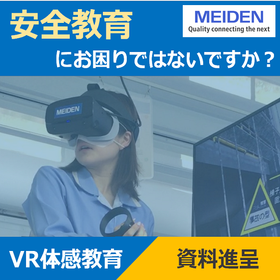Control of the physical properties and structure of plating films and troubleshooting measures.
S11126
★Control of adhesion, stress, and orientation!! What are the applications and practical examples of various plating technologies?
Lecturer Part-time Lecturer at Shibaura Institute of Technology / Part-time Lecturer at Chuo University / Technical Advisor at Tokyo Metropolitan Industrial Technology Research Institute Dr. Toru Watanabe, Ph.D. Target Audience: Personnel in charge of implementation-related technologies Venue: Kawasaki City Educational and Cultural Center, 4th Floor, Room 2 [Kanagawa, Kawasaki City] 12 minutes on foot from JR/Kyuko "Kawasaki Station," 5 minutes by bus Date and Time: November 28, 2011 (Monday) 13:00-16:30 Capacity: 30 people *Registration will close once full. Please apply early. Participation Fee: [Early Bird Discount Price] 46,200 yen (tax included, including text costs) for up to 2 people per company *Limited to Tech-Zone members who apply by November 14. Membership registration is free. *After November 14, the [Regular Price] will be 49,350 yen (tax included, including text costs) for up to 2 people per company.
Inquire About This Product
basic information
【Purpose of the Course】 All physical properties of plating films originate from the structure of the plating film (metallurgical structure, grain size, surface morphology, orientation, film stress, adhesion, etc.). Therefore, by controlling the structure of the plating film, most physical properties of the plating film can be arbitrarily controlled. In plating technology, the process of atoms precipitating from ions in solution is explained electrochemically, but the plating film itself is a metallic material. Thus, the structure of the plating film can be explained and controlled by metallurgy. In particular, the theory of adhesion of plating films is unique to the speaker, and it is believed to be the ultimate absolute theory. Additionally, this lecture will explain a completely different theory regarding the corrosion of metals than what has been presented so far.
Price range
P2
Delivery Time
P2
Applications/Examples of results
1. Theory of Structure and Property Control of Plating Films (Metallurgical Considerations) 1. Control of Crystallographic Structure a. Crystalline b. Amorphous c. Intermetallic Compounds d. Solid Solutions e. Mixed Microstructures 2. Control of Surface Morphology a. Smooth (Glossy) b. Semi-Gloss (Surface Roughness) 3. Control of Crystal Grain Size (Shape) a. Microcrystalline b. Fibrous Crystals c. Coarse Crystals d. Columnar Crystals 4. Control of Adhesion a. Metal Substrates b. Non-Metal Substrates 5. Control of Orientation a. Electrodeposited Films b. Electroless Plating (Including Replacement Plating) Films 6. Control of Residual Strain (Residual Stress) in Films a. Tensile Strain (Stress) b. Compressive Strain (Stress) 7. Control of Abnormal Morphologies a. Nodules b. Whiskers c. Pits 2. Applications and Practical Examples of Various Plating Technologies 1. Surface Treatment 2. Fabrication of Functional Materials 3. Electroforming Technology 3. New Theory on Metal Corrosion (Electronic Considerations) Proposal of a theory on metal corrosion that is entirely different from previous theories, and explanation of actual corrosion phenomena based on that theory.
Company information
Our company has developed its business from "seminar planning" to various forms such as "lecturer dispatch," "publishing planning," "technical consultant dispatch," "trend research," "business matching," and "business development consulting," in order to support clients in a wide range of fields including chemistry, electronics, automotive, energy, medical devices, food, and building materials. By doing so, we have advanced our company and opened up new markets. AndTech promises to continue listening to our clients' voices, entering the business areas and markets they desire, and to remain a company that is loved by our clients, as we share their challenges, think together, and forge new paths.










